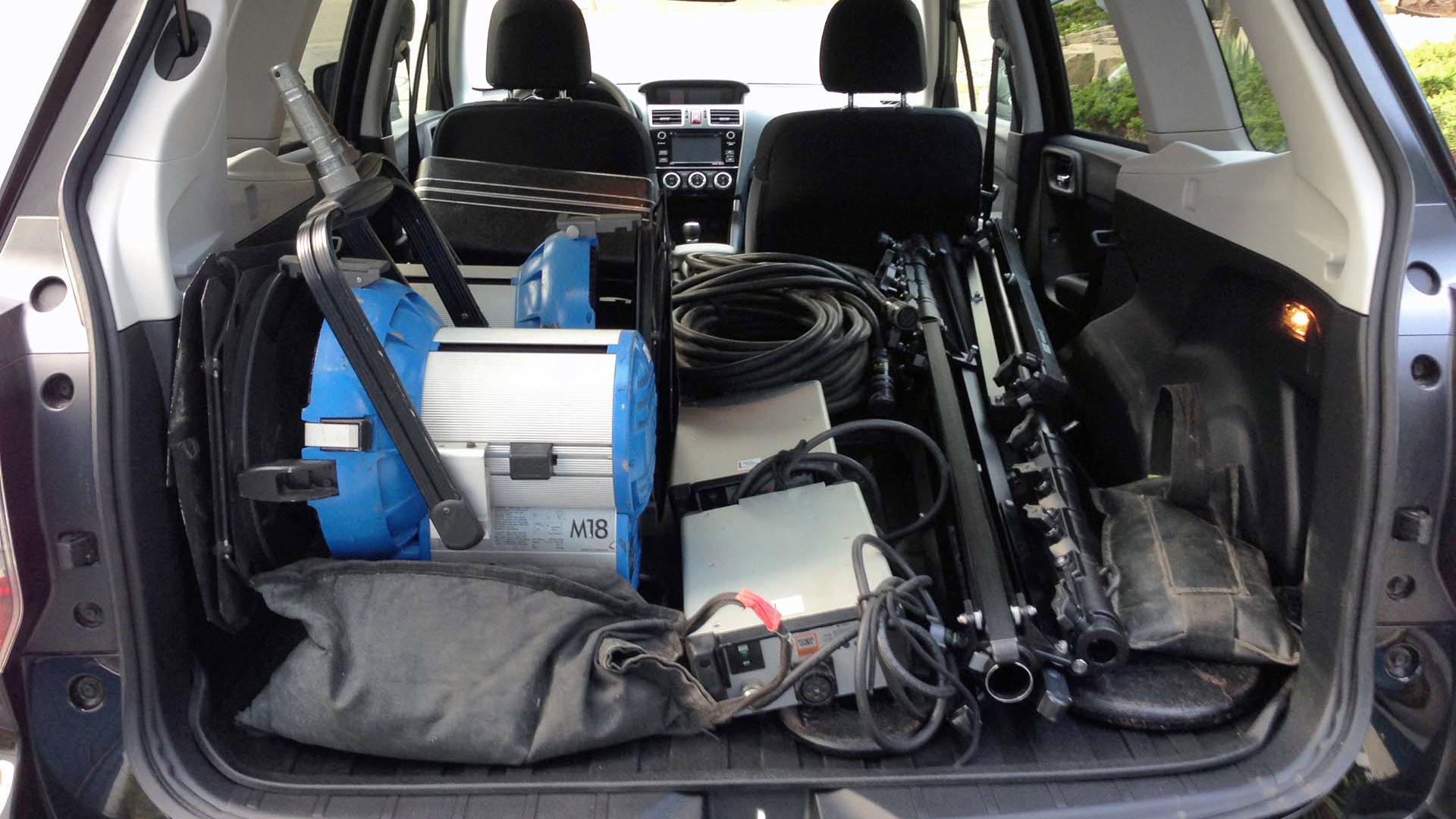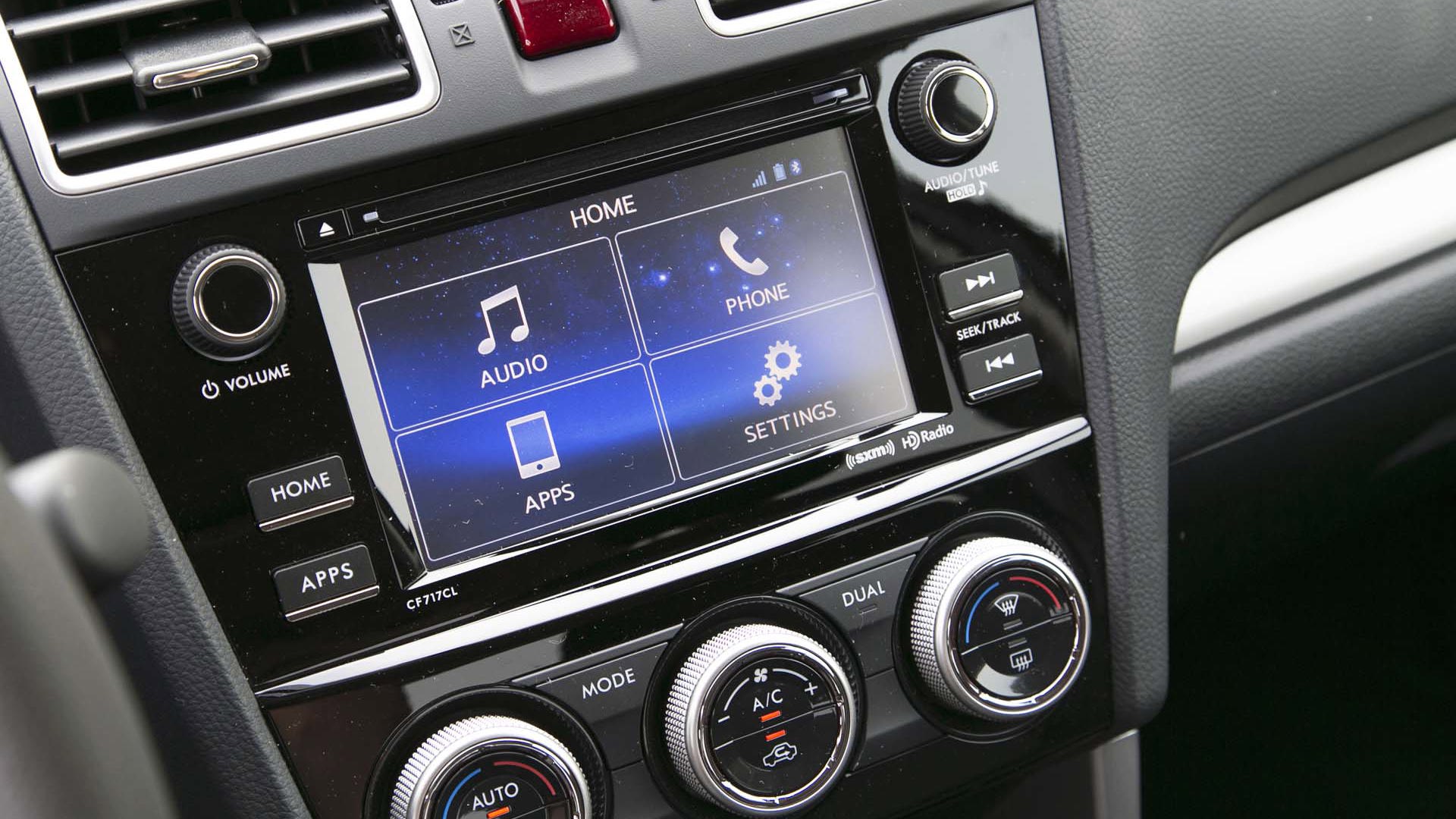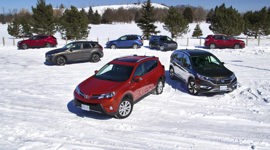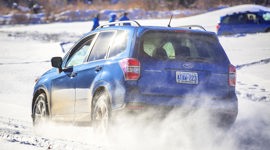 AutoTrader SCORE
AutoTrader SCORE
-
EXTERIOR STYLING6/10
-
INTERIOR6/10
-
PERFORMANCE6/10
-
COMFORT7/10
-
FUEL ECONOMY7/10
At last count, there were at least 95 different SUVs and crossovers of varying sizes for sale in Canada. Ninety-five! And thanks to a new crop of sub-compact SUVs, that number is still growing, with new models or significantly updated ones popping on to the market every few months like so many mushrooms or Toronto condo towers.
Imagine that, a Sport Utility Vehicle that actually remembers the Utility part of its name.
There’s truly something to suit every buyer’s desires too. Looking for a gargantuan bus that’ll hold eight people and tow a forty-foot boat? There are a few of ‘em out there. How about an SUV that performs (and sounds) better than most sports cars? No problem, several choices there too.
And the luxury and features? Hoo boy! Stuff that was exotic kit – like adaptive cruise control, active lane-keeping assistants and air conditioned seats – found on high priced machines only a few years ago can be spec’ed on a $30,000 micro-ute now.
Don’t even get me started on the styling. Swoopy lines, fancy pearlescent, tri-coat, paint, big, sporty wheels and body kits are all the rage now. Never mind those ridiculous “Sport Activity Coupe” things.
While the automotive world continues to flush sanity down the drain in leapfrogging itself for more tech, more performance, more flashy exteriors (and interiors!), there remains a quiet population of buyers seeking an unpretentious, reliable and practical mobile conveyance unit.
For those people, Subaru still makes the Forester you see here.
While it’s true the Forester can be optioned up with navigation, the exceptional EyeSight suite of adaptive safety features, and an industry-best CVT transmission, this Forester, a $29,995 Touring trim model, has none of that.
What it does have is a tall, boxy profile with lots of glass all around the cabin, and door mirrors affixed to the door instead of the corner of the window. And an upright seating position that all work together to give driver and passengers an uncompromised outward view. This means the cabin is bright and cheery, and safer due to unobstructed sightlines.
That boxiness also provides door openings, both front and rear, that are very square. This allows occupants to get in and out of the Forester with little risk of smacking their heads on a steeply raked A- or C-pillar. Plus, by not sloping the roofline or rear hatch dramatically, the cargo hold is wide and tall and offers best-in-class capacity. There’s a large, removable rubber mat with cupped sides in the cargo hold to help keep the messes of adventure (or simply a spilled carton of milk in your grocery run) from ruining the carpet.
Imagine that, a Sport Utility Vehicle that actually remembers the Utility part of its name.
The seats – wrapped in durable fabric, not leather that’ll make your back sweat – are firm yet comfortable and have headrests that go up and down, but also ratchet forward to ensure optimal positioning for safety and comfort. And just because they’re not wrapped in the virginal hides of some fancy Italian bovine, doesn’t mean they can’t be heated – they are, because it just makes sense if you’re going to use your Forester regardless of the weather (and you should).
Headroom, even under the massive panoramic sunroof, is ample for both front and rear passengers, and there is a reasonable amount of legroom in the back for all but the leggiest of passengers.
The driver faces a pair of primary gauges – a big, round, analogue tachometer on the left, and speedometer on the right with a simple digital info window between them for fuel level and basic trip information. There are no frivolous “eco leaf” graphics growing, or silly faux mud-splatter design cues – just simple white digits-on-black dials.
For 2016 the steering wheel has been updated slightly with new buttons to help control the also-new-for-2016 implementation of Subaru’s infotainment system with StarLink connectivity. The high-resolution 6.2” touch screen interface is monumentally better than last year’s ridiculously archaic unit, and is logical enough in its operation to require a very short learning curve.
Truth be told, the screen is smaller than many of the competitors now offer, the sound quality from the audio system is marginally better than the mediocre sound from last year’s system, but most frustrating is the system’s inability to reconnect automatically to my iPod every time the Forester was re-started. There will surely be a technical fix for this coming, but in the meantime, it’s a wildly annoying hiccup.
Last year Senior Editor Jonathan Yarkony complained about the “unrefined engine note that seeps in and gets under your skin” in the 2015 Forester 2.5i he drove suggesting that not even Subaru devotees would be able to bear it. That rig was fitted with Subaru’s CVT transmission that perhaps contributed to the “metallic drone” that punished Yarkony’s ears. Our 2016 tester here is equipped with (place sound of angel’s voices here) a good ol’ fashioned manual transmission.
Being able to row through (the admittedly rubbery) six-speed transmission makes for a much more engaging driving experience and somehow made the Forester’s 2.5 L horizontally opposed 4-cylinder engine’s distinctive rumbly growl even enjoyable. I found no significant drone or really, any annoying sounds from the Forester during its week with me.
Most buyers will opt for the CVT and let the vehicle do the shifting for them, and while they will arguably have a less involved driving experience, they will benefit from better fuel efficiency. The 6-speed manual is rated at 10.6 L/100 km city and 8.4 L/100 km highway. We saw an overall average for our week of driving (2/3 city) at a respectable 9.6 L/100 km. The CVT-equipped Foresters, by comparison, are rated at 9.6 city and 7.5 L/100 km highway.
The Forester’s handling is also a relatively positive attribute allowing good control, if tempered by a fair bit of body roll. While not the most sensitive, the steering gives enough feedback to keep the driver engaged – at least by SUV standards. The ride is also typical of most compact SUVs in that it’s firm, but with lots of suspension travel to soak up the worst of the bumps.
Braking is decent with a linear pedal feel and enough braking power to haul the Forester – even when fully loaded – with authority.
In addition to all the good, sensible reasons listed above to drive a Forester like this, there are two more that surely appeal to most Subaru buyers. The first is the brand’s record for reliability, with the Forester long having been recognized for its long-term durability. The second is safety. Even without the EyeSight tech suite, the Forester still receives an IIHS Top Safety Pick (like the rest of Subaru’s model line up, for that matter), making yet one more compelling reason to forego fashion for function.
The Forester is never going to win any beauty pageants, even amongst its crossover peers, nor is it going to draw in buyers seeking sublime luxury with its interior. But what the Forester is – and always has been – is an excellent choice for consumers looking for a solid and reliable, all-weather vehicle and great value. Even amongst 94 other SUVs, mercifully, common sense says there’s still a place for a vehicle like the Forester in our Canadian market.
| Warranty: 3 years/60,000 km; 5 years/100,000 km powertrain; 5 years/unlimited distance corrosion perforation; 3 years/unlimited distance roadside assistance Competitors: |
| Model Tested | 2016 Subaru Forester 2.5i Touring Package (6MT) |
|---|---|
| Base Price | $29,995 |
| A/C Tax | $100 |
| Destination Fee | $1,675 |
| Price as Tested | $31,770 |
|
Optional Equipment
None
|
|




































